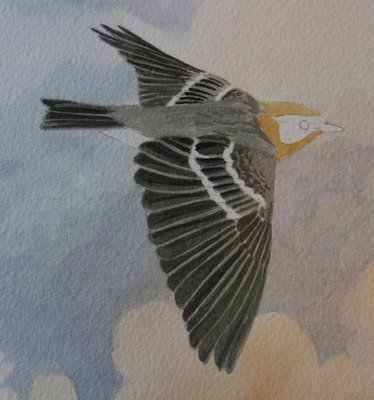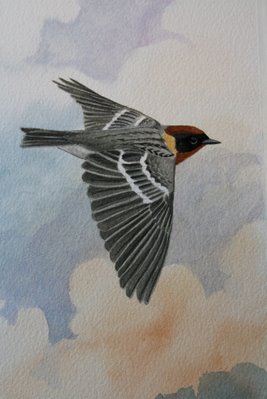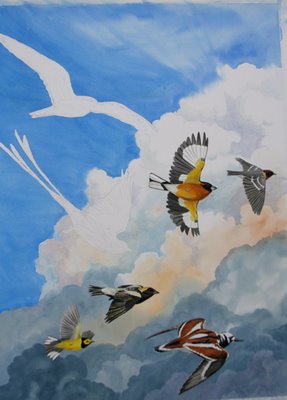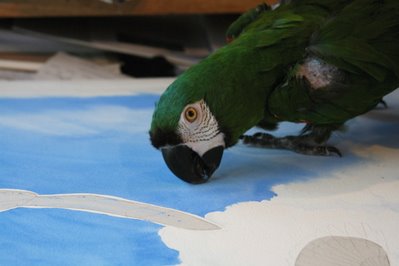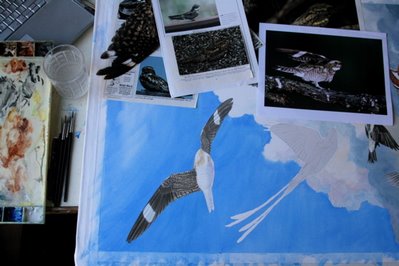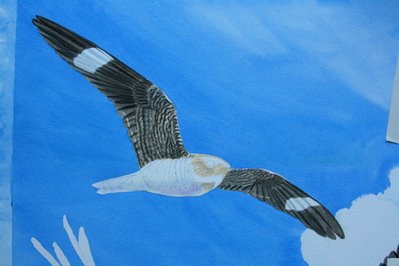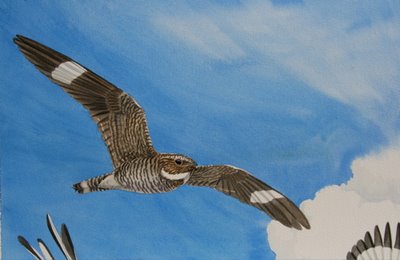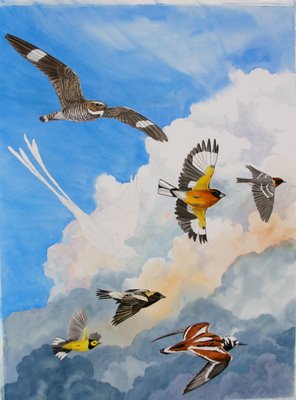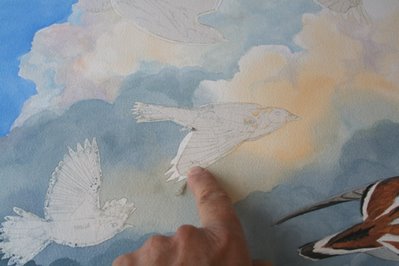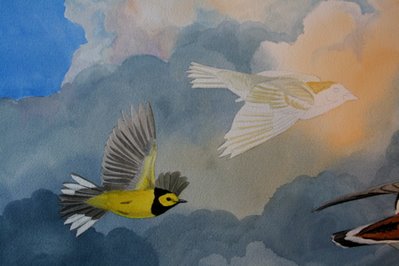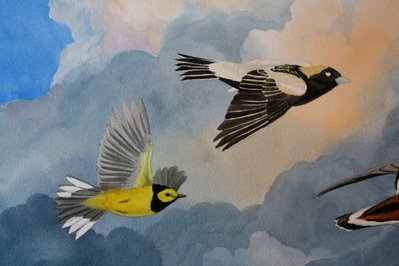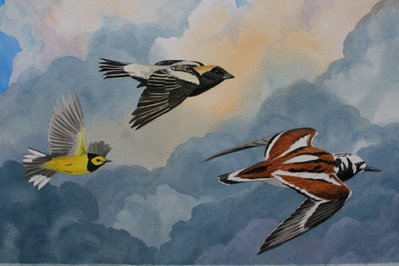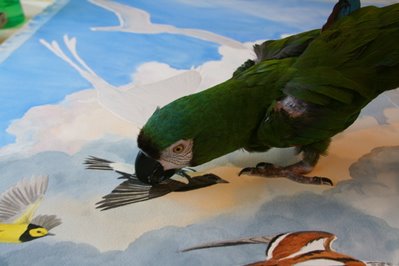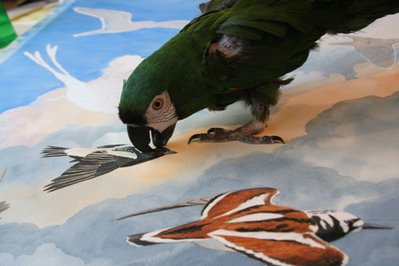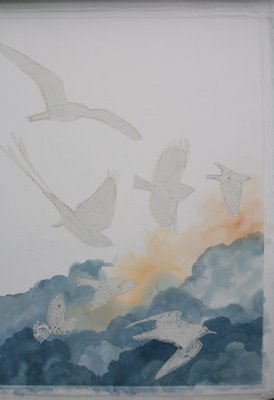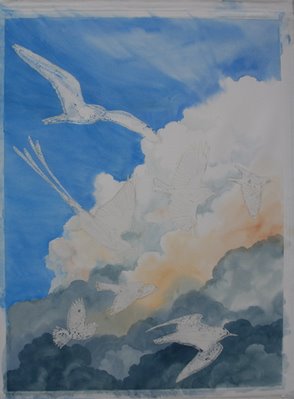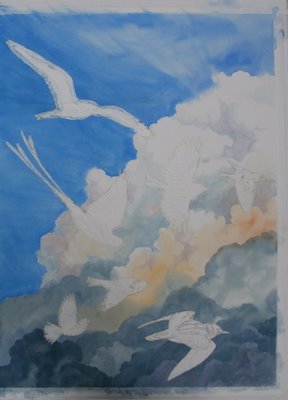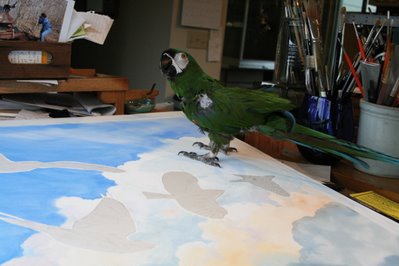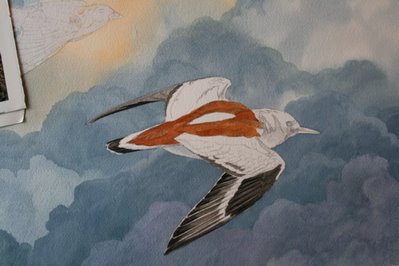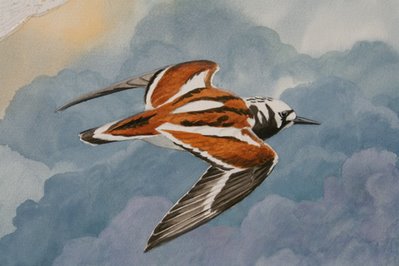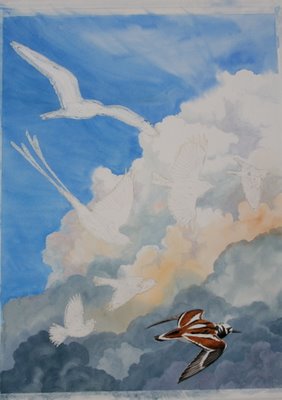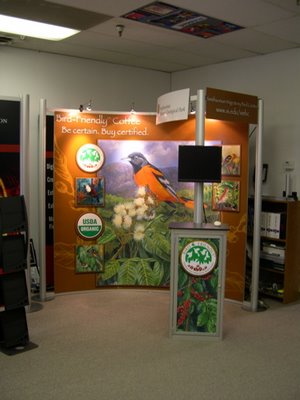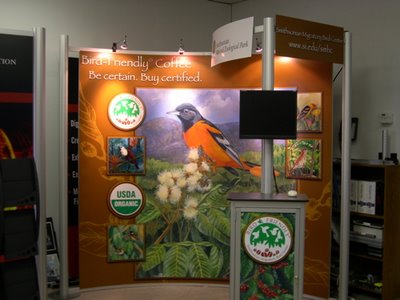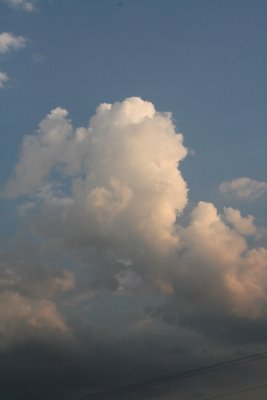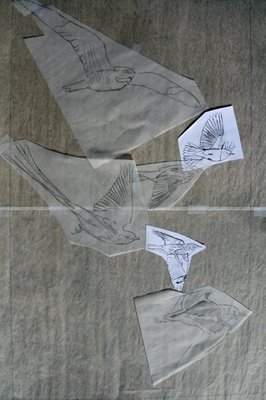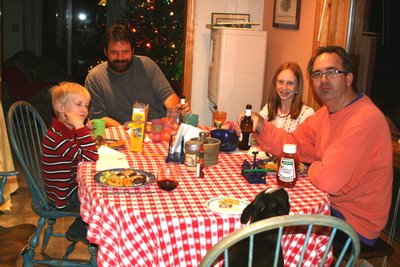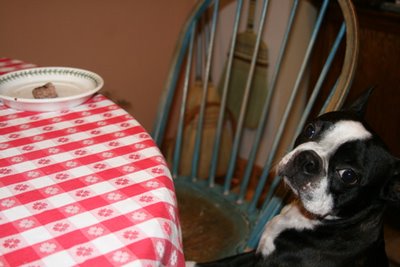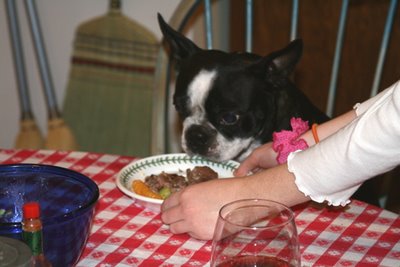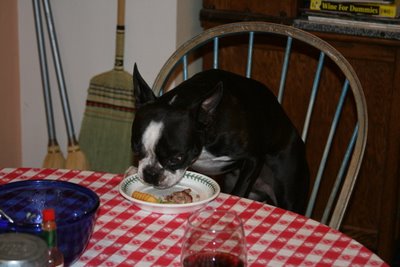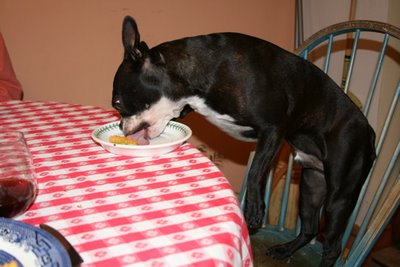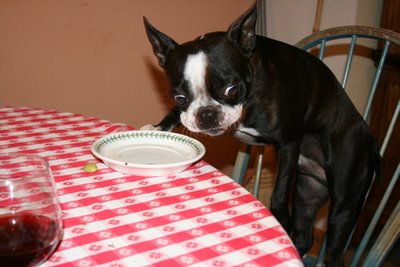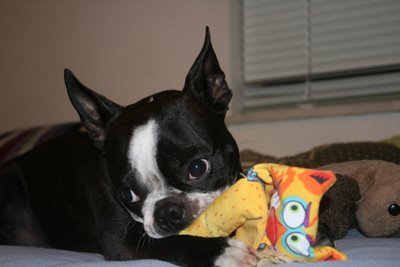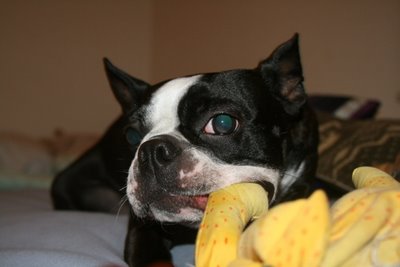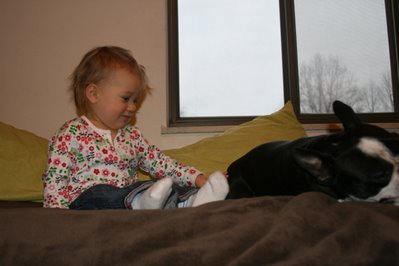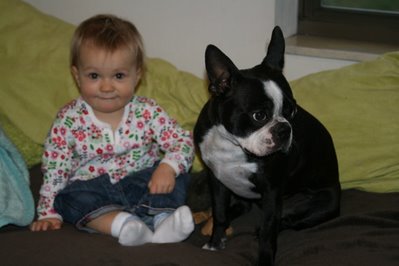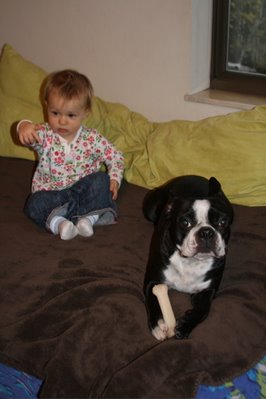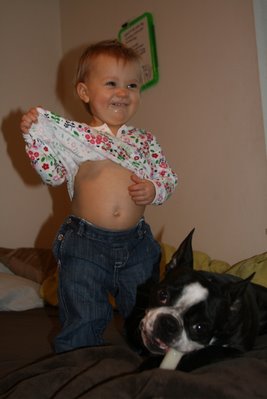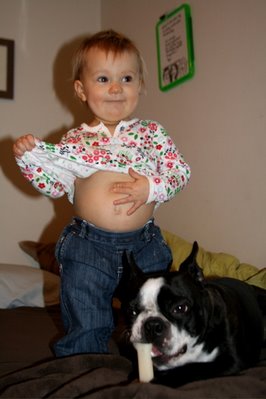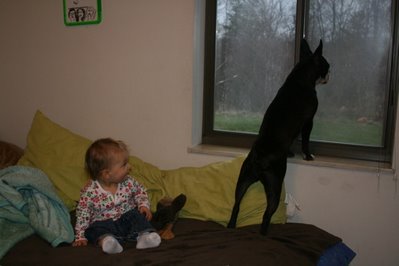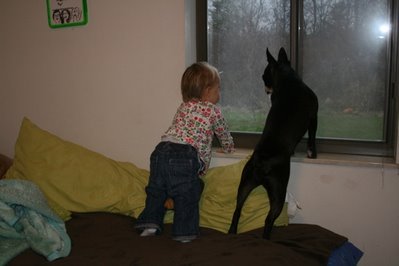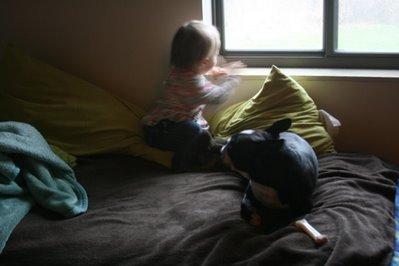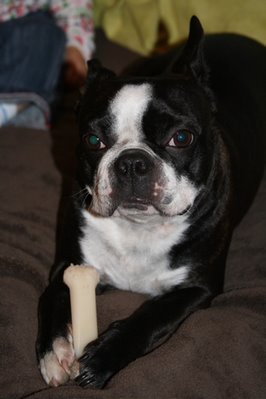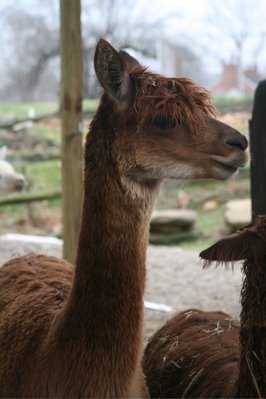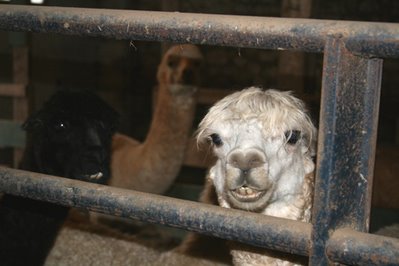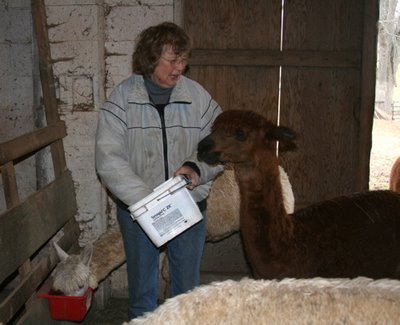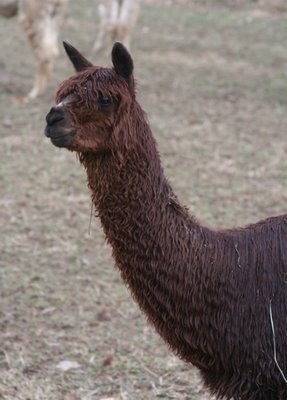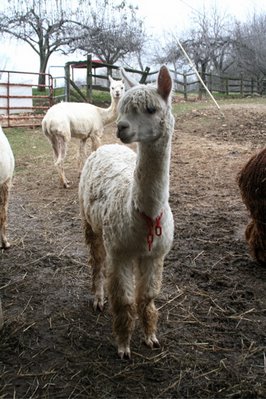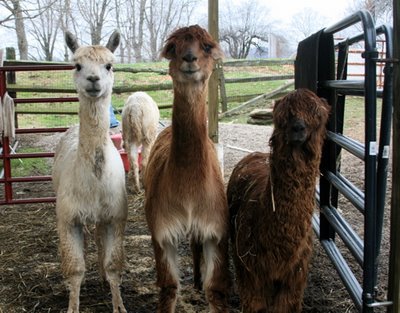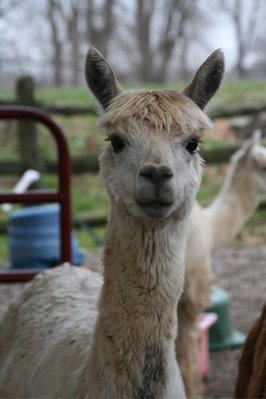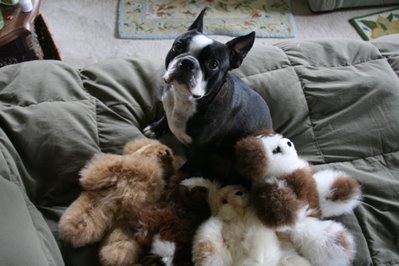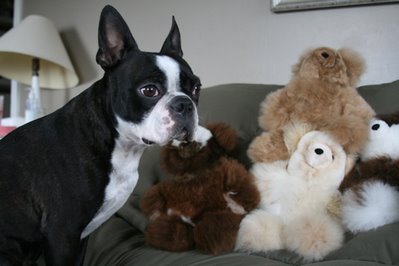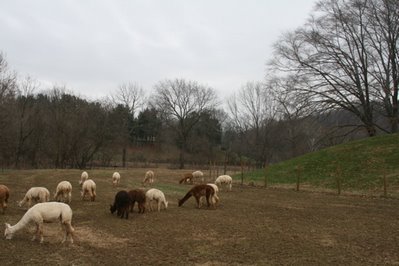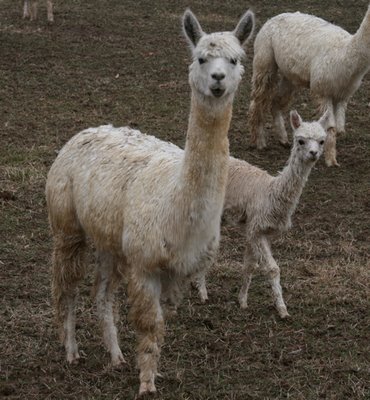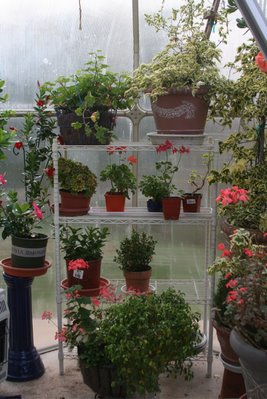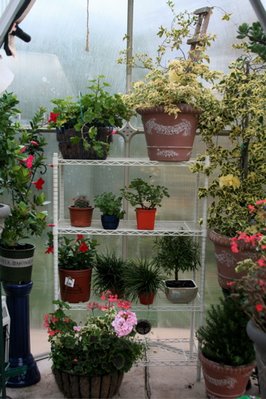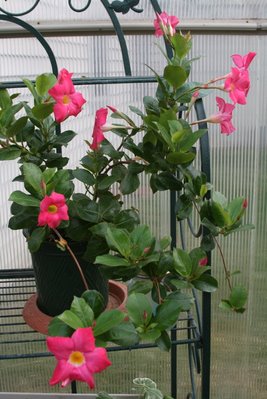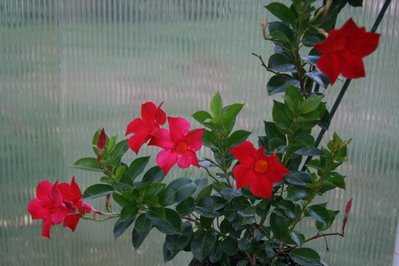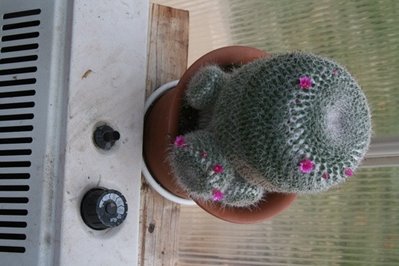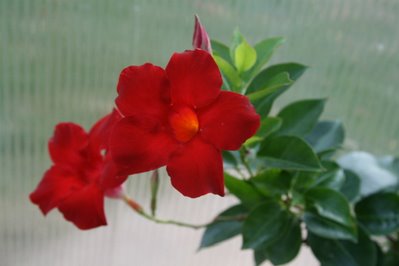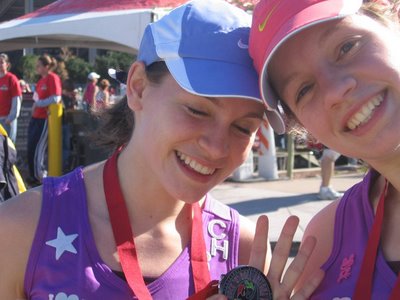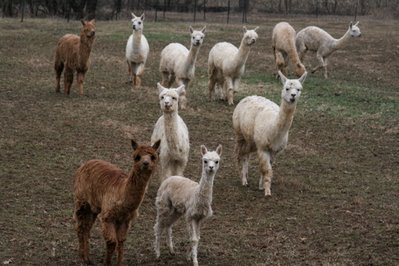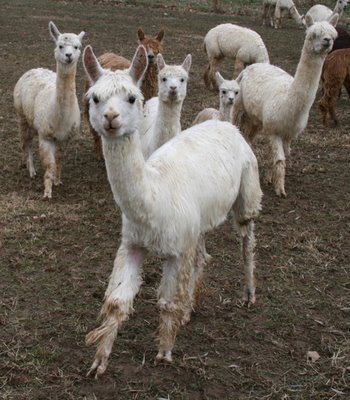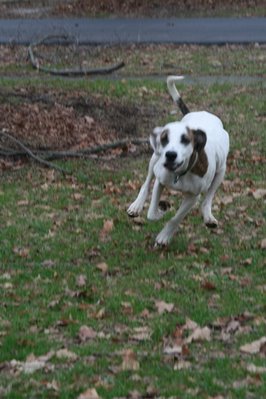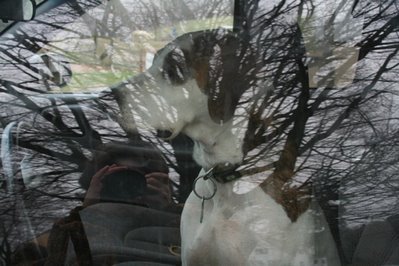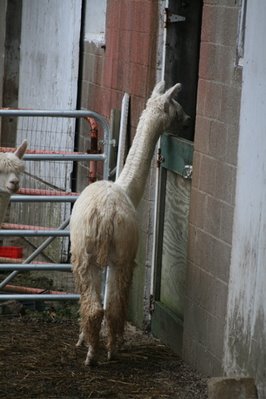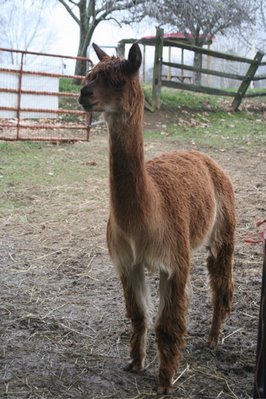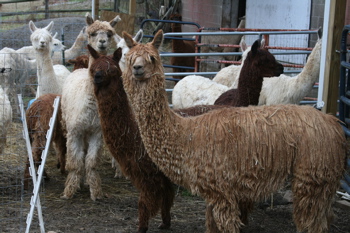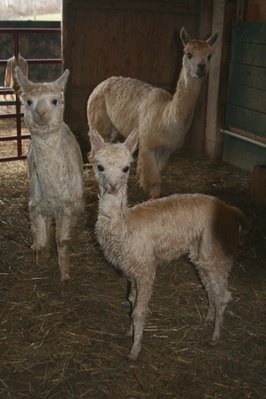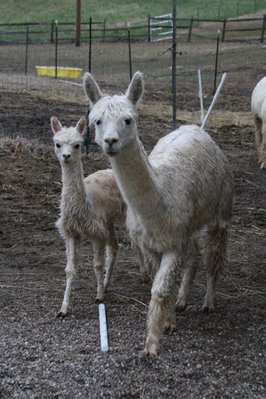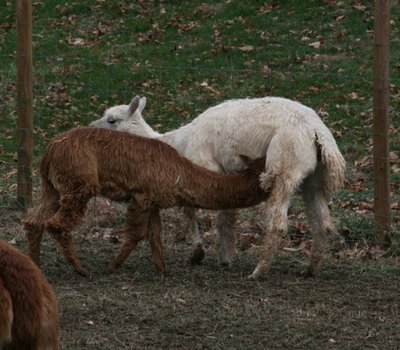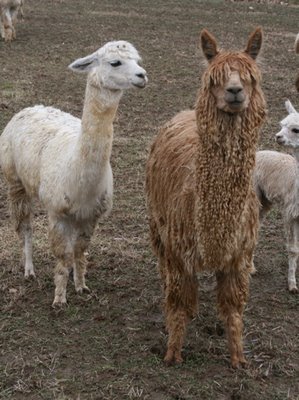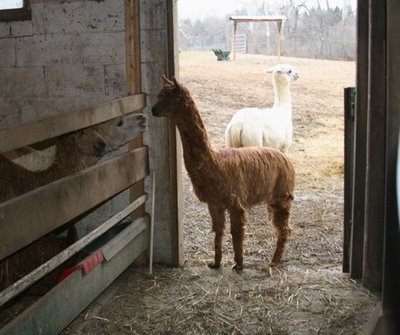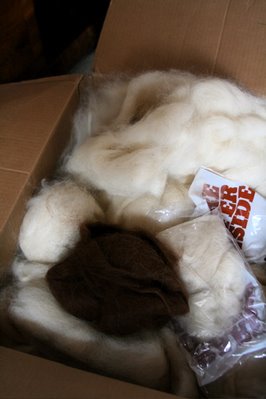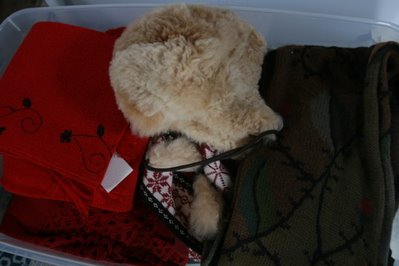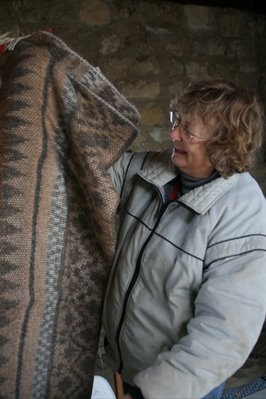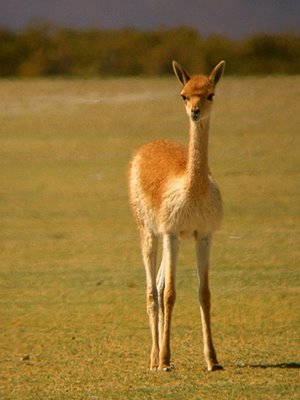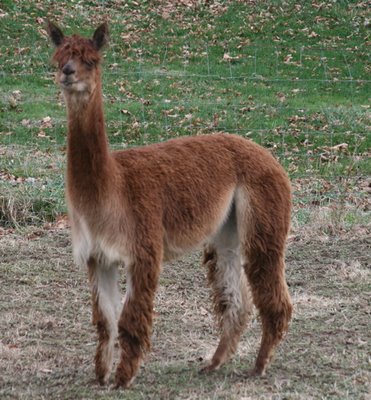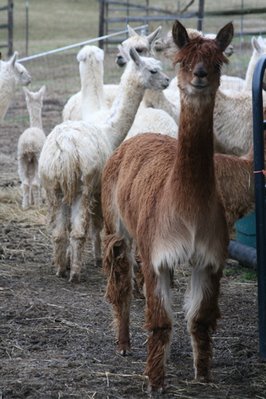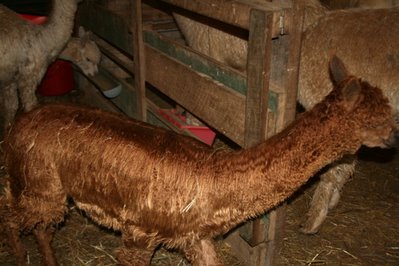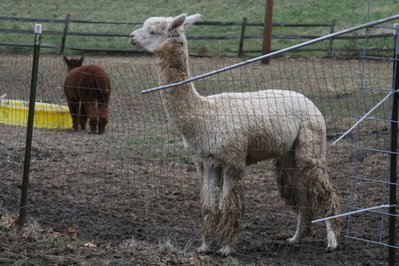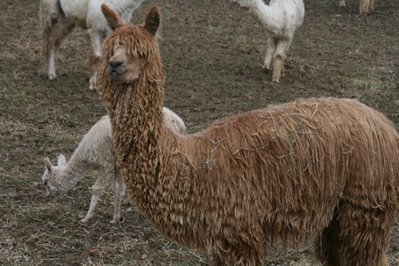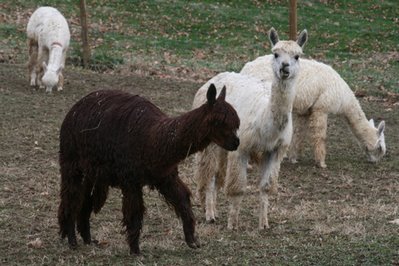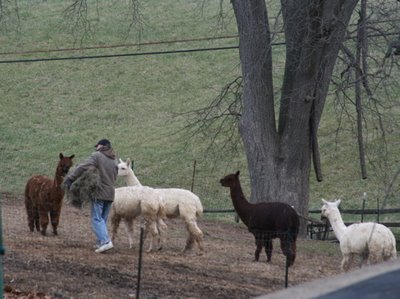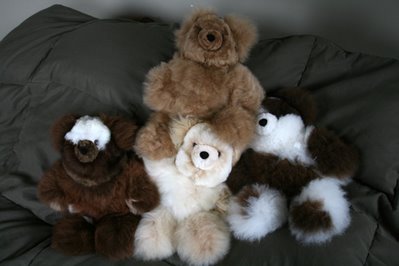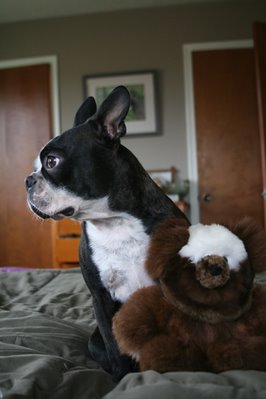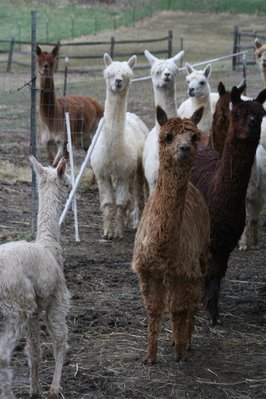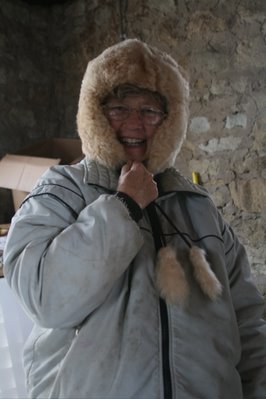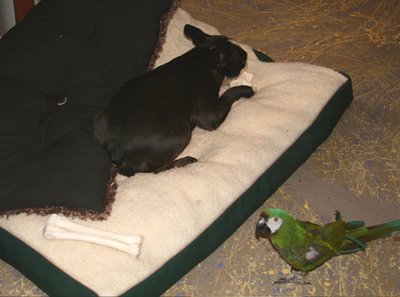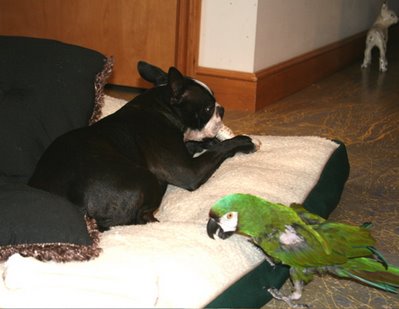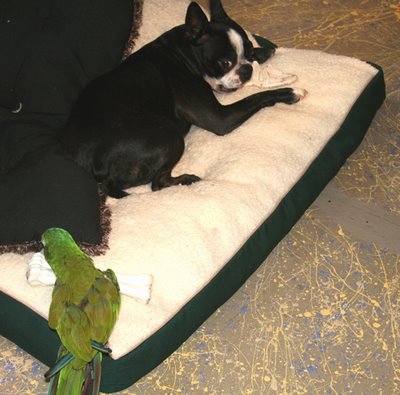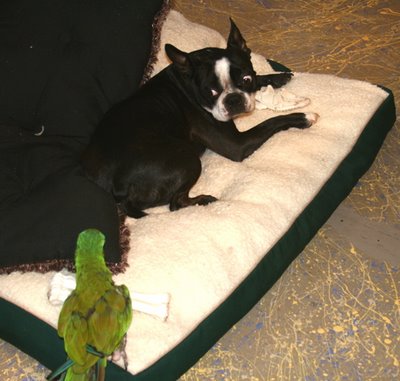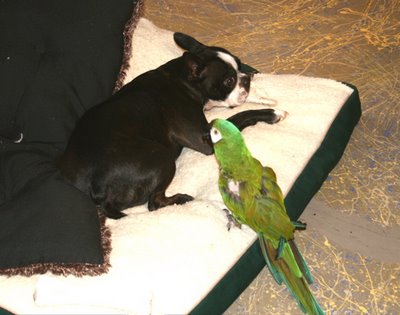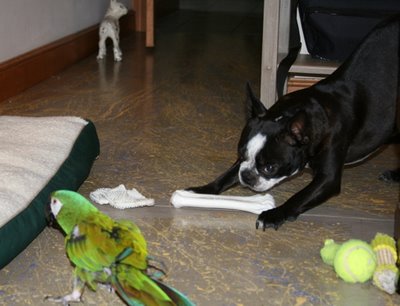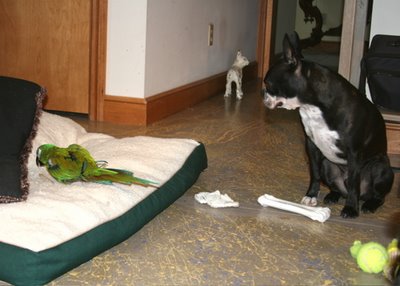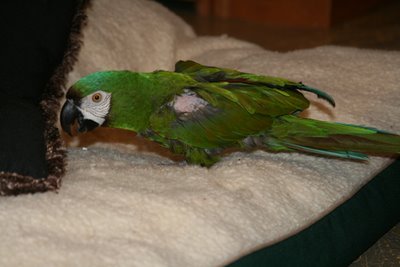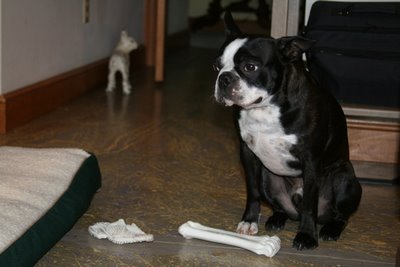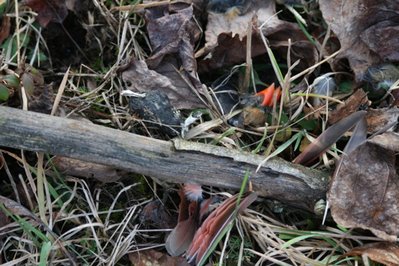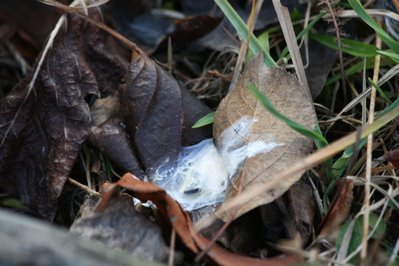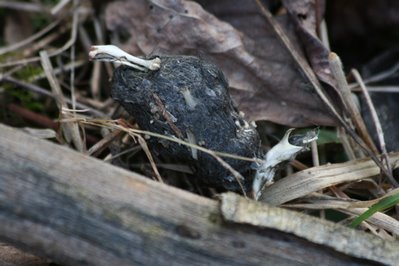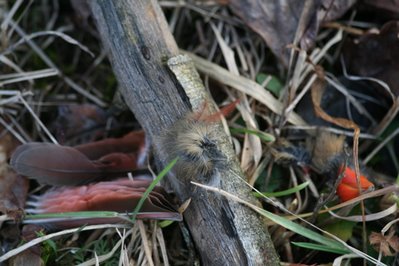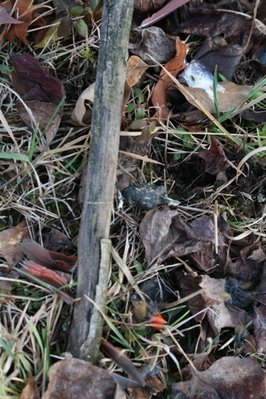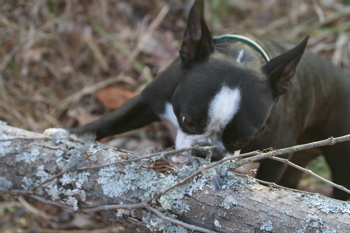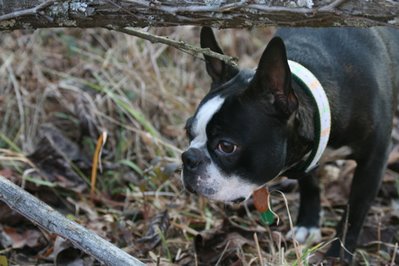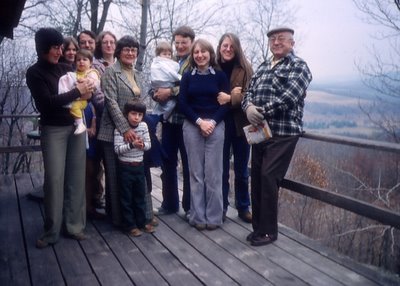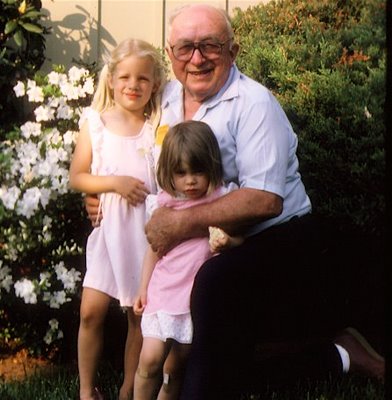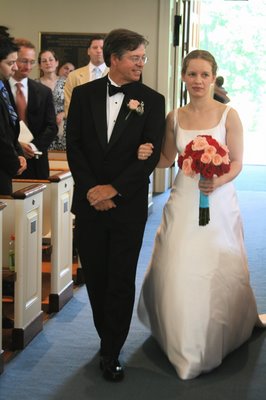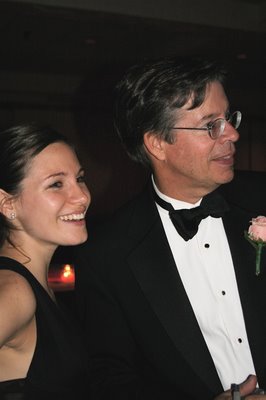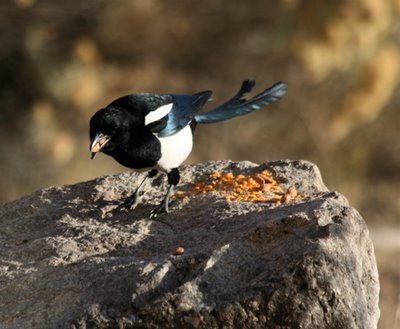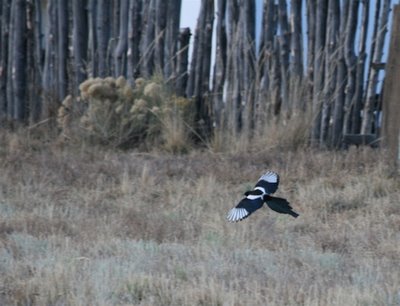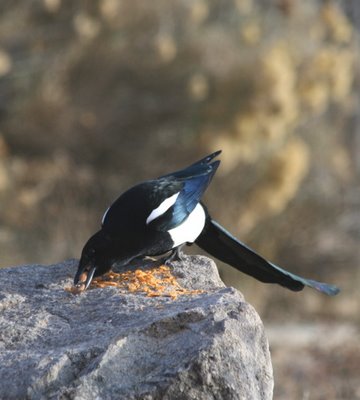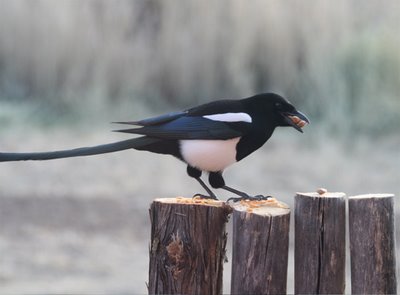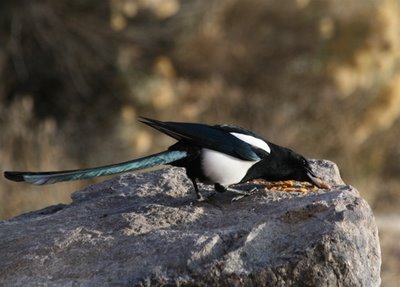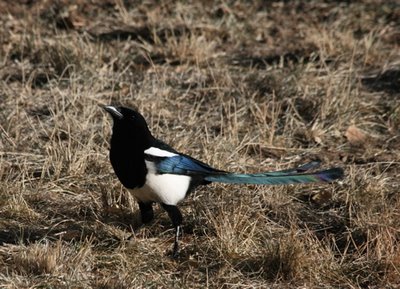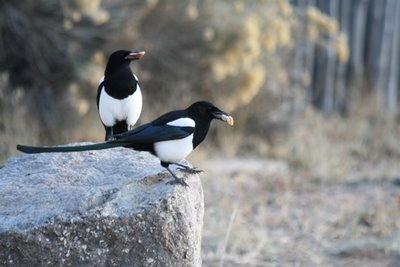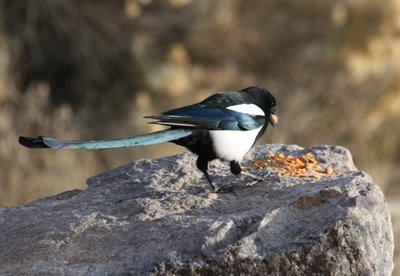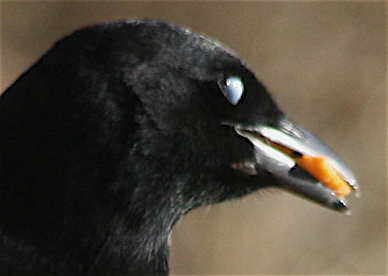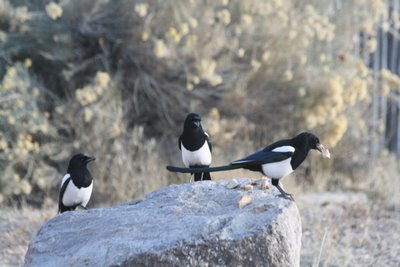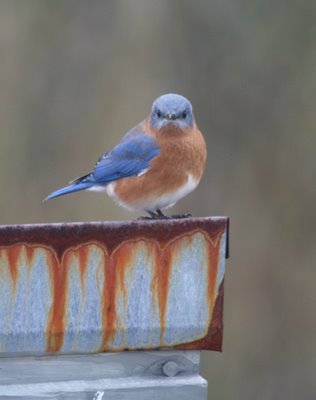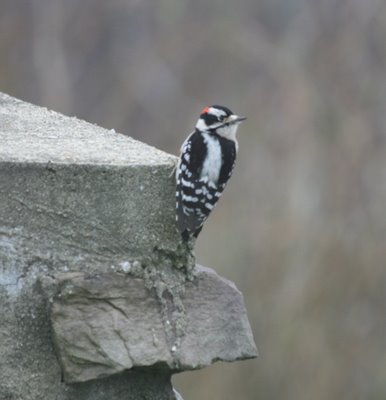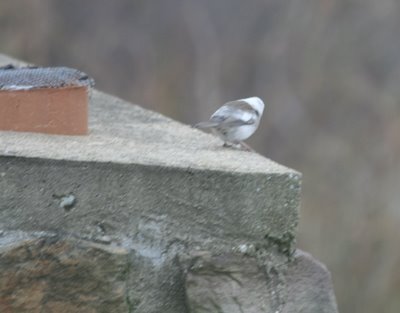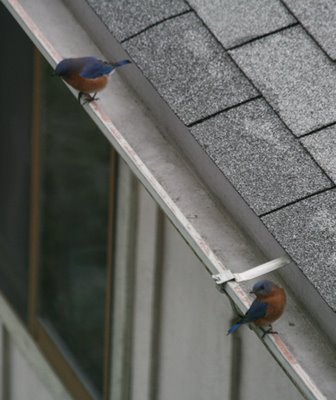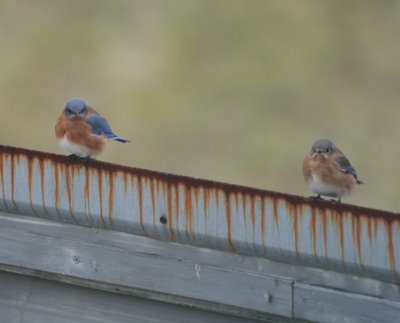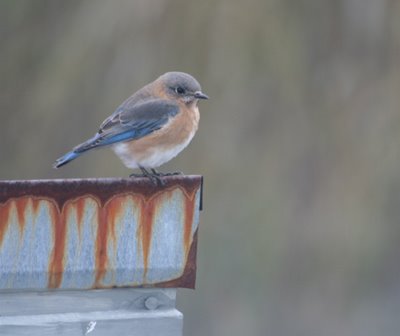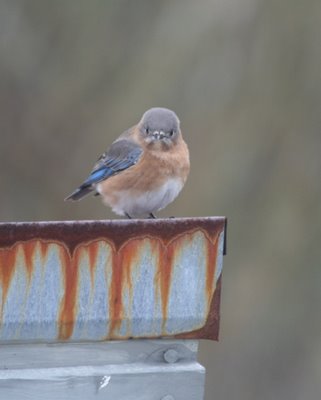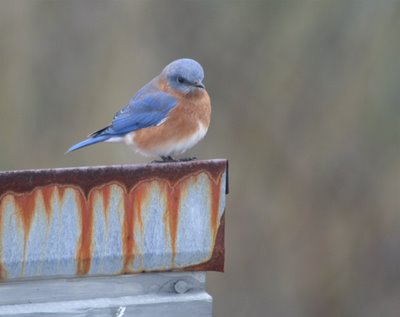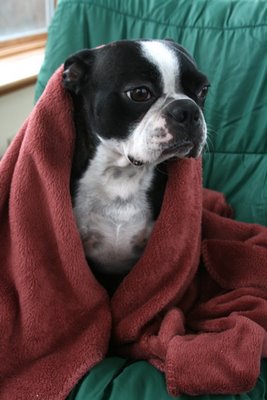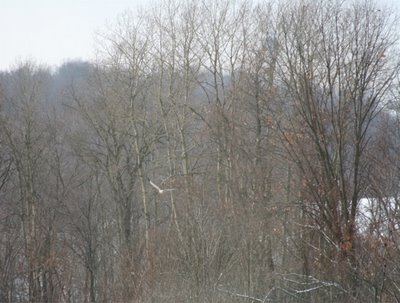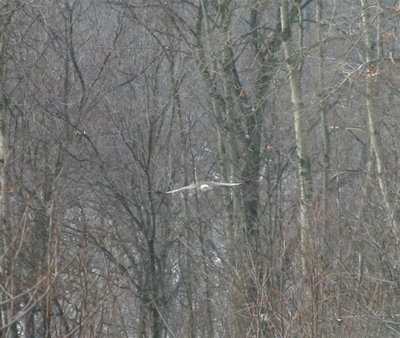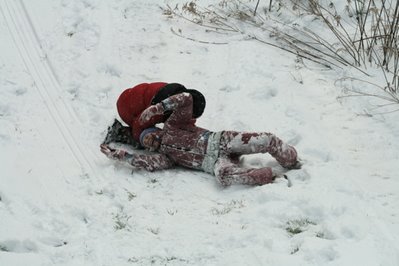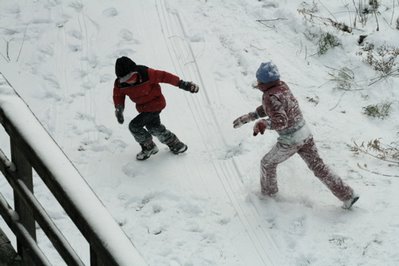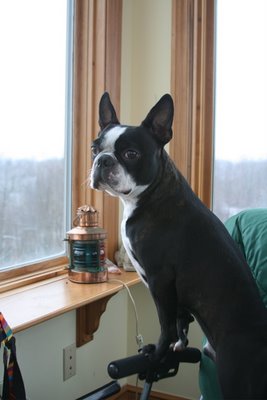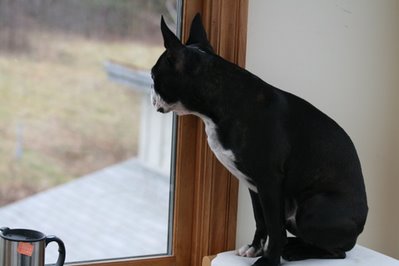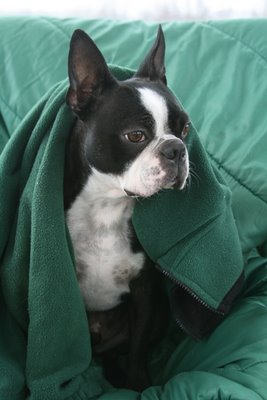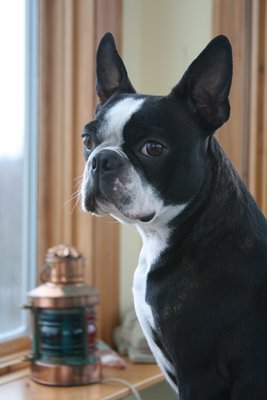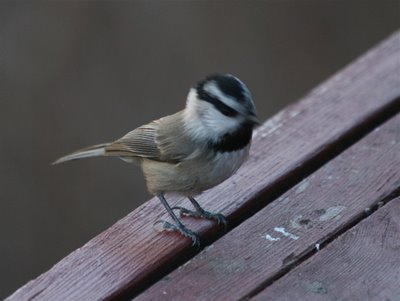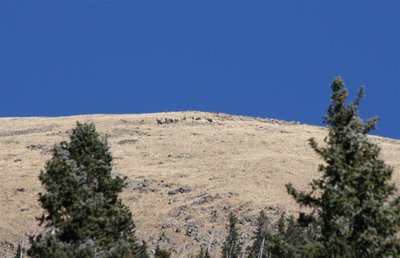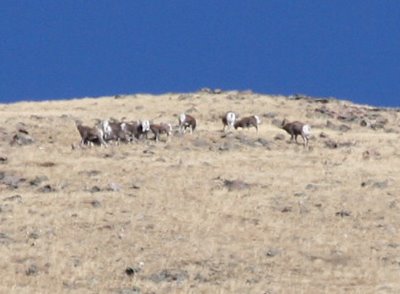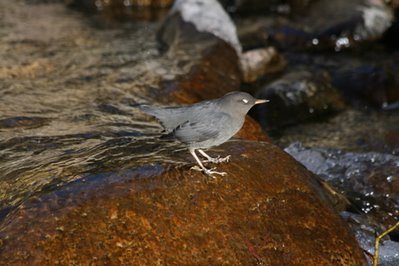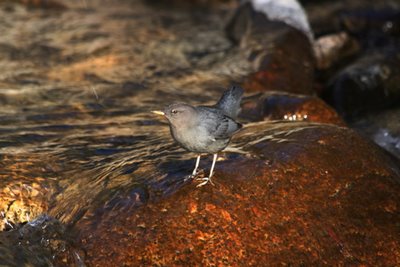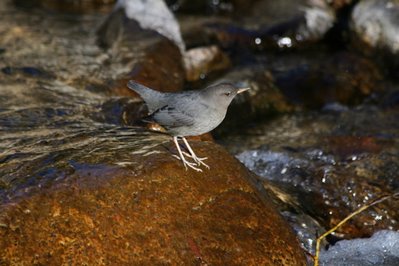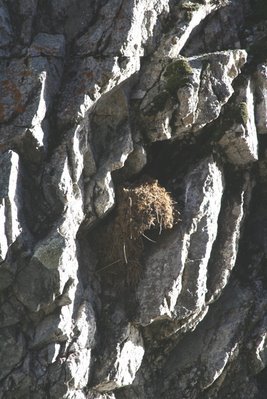It's 6 PM, New Year's Day. I have the gas logs going, and all the other lights are off. Baker was sleeping at my elbow and I was all cuddled down ready to post when both kids appeared and wanted to look at all last night's photos. So it became a jiggly, jostly, not-so-quiet family affair.
My first bird of the day was a junco, I think; there were titmice and juncoes and chickadees at the feeder, and I didn't think to notice which one I saw first. In among the juncoes was pretty Snowflake, the leucistic female. A good sign, I think. I slept in today until 10:30, something that never happens unless I'm knocked cold by exertion. My first artist of the day on XM Radio was Ryan Adams. Another good sign. Bill didn't get up until 2:30 PM, another record. I wasn't even sure he was still alive. I had made homemade hot and sour soup for his wakeup lunch, then sighed and put it in the refrigerator when he didn't emerge. He shuffled into the kitchen, bleary-eyed, and said, "I woke up wide awake at 8 AM..."
"And what happened between 8 and 2:30 PM?" I asked.
"I wrote
War and Peace."
Life with Guitarzan.
Last night was the most fun I've ever had on New Year's Eve. It was also the most fun I've ever had playing music, and that's saying something. Lots of people came to the party, and most of them were saying it was the most fun they'd ever had, too. Everybody listened to the music and everybody danced like crazy. Margaret and Zane and Tony and Martha worked like Trojans turning the brick-walled loft into a party zone. Lighting is everything. The big green square in the picture below is one of our sheets, on which swirling iTunes shapes were projected. Here's Margaret, dancing. She looked like some kind of goddess last night.
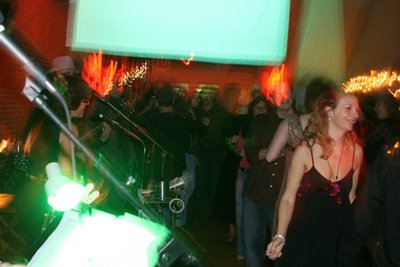
We had three digital projectors going full blast projecting abstract images onto sheets. So light and color were dancing across us as we played. It was like visual alcohol. We started playing around 9 p.m. At 11:57, Tony projected the obligatory Times Square ball drop onto a sheet, but we only gave it three minutes, just so we'd know when to raise a toast and look for someone to kiss, and then it was back to real life and live music. We played until 1:45, running through about 40 songs, almost half of them new.
The Cajuns have a term, "fais do-do." It means, literally, "Put the babies to bed." They bring their kids to their dances, and they bring pads and blankies and put them to sleep in an adjoining room. So the music seeps into the children's souls, and they stay up as late as they can, but they have a place to go when it all gets to be too much. Phoebe and Liam were in charge of keeping Sophia and Oona happy in a carpeted room on the third floor, and making sure their mothers knew if they woke up after they went to sleep.
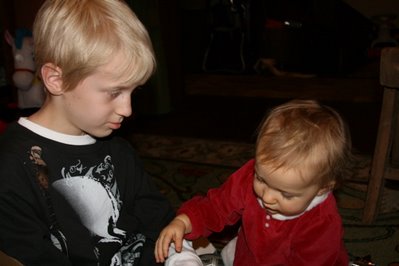
Oona loves Liam so much that he had to leave the room or she wouldn't go to sleep.
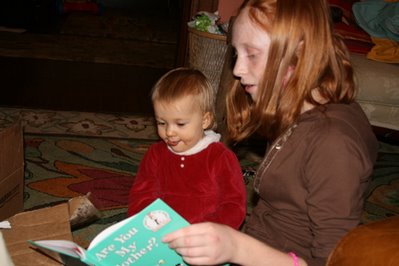
Phoebe loved having a real babysitting job at last. She's going to be a terrific babysitter. She also partied down with us, and stayed up until 3:30 without a single complaint. Wow. Liam konked around 11, came down to ring in the New Year with us, and crawled back into his sleeping bag. We always have our kids with us at New Year's, no matter what.
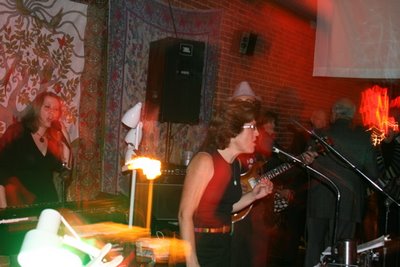
Jess and me singing. Singing with Jess is amazing. It's like having a booster rocket behind me. Just singing backup with her is a blast. This may have been "Breakdown," by Tom Petty. We were a two-person choir behind Bill of the Birds.
Baby, baby breakDOWN OOOOOwoooooOOOOOO.........
One of the most fun songs of the night was "I'll Take You There" by the Staples Singers. Jess took the lead and the rest of us got to sing backup. Oh, it was heavenly, just like her voice. I'm blown away by how fast she's learned the keyboard parts to all these songs, most of which she's never played before. She's got a terrific ear. Everybody was buzzing about our new Orang.

Shila, who has taken several photography classes and actually reads her camera manuals, took all these band pictures with my camera. I can safely say that I'd have gotten nothing in those conditions--dark, with spots of colored light. But she knew to set it to AV, open the aperture all the way to 3.5, and use the flash. This did a couple of interesting things. First, the flash captured the subject she focused on, in sharp relief. But the shutter proceeded to stay open for almost four seconds, thanks to the extremely low light, so everything but the subject at the moment of the flash was blurred with motion. The results come as close to being there as a photograph could. I LOVE these pictures. A million thank yous, Shila. What a gift to give us! Now go work on your web site so I can link to your art, for crying out loud.

Perhaps the coolest picture of Clay ever taken. His solos, particularly on "Burning Down the House" and "Take Me to the River," were ossum. Man, he's fun to play with. When I called her today, attempting to describe the experience of playing in this band, my 86-year-old mom commented, "A good bass player can make a band." How true. Wish she could have been there to hear it.
William H. Thompson III played and sang like a shaggy demon last night. He's a very engaging, funny and fun-to-watch performer. There are a lot of people who play well, but many aren't particularly fun to watch. Bill's got it all going on, and he talks and jokes with the audience in a way that makes them feel like part of the fun. He traded guitar licks with Vinnie, and we even had some vaguely Bostonesque harmony guitar parts going on. Wooo! Bill makes sure all the musicians are watching him; he conducts us with his eyebrows and little nods of his head as he plays.
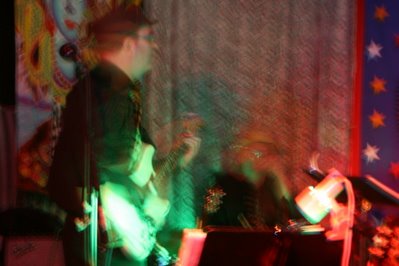
So we all start together, we all end together, and nobody steps on anyone's solos, because everyone's keeping an eye on Bill,
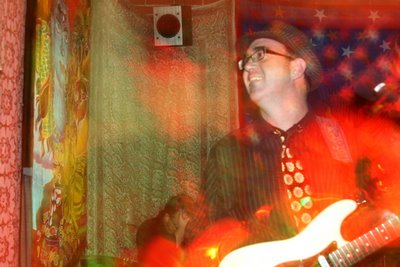
who's keeping track of where we are in the song, and who solos and who sings, and when. It's vital to keeping a band tight--no different from conducting an orchestra, and yet, in my experience, it's comparatively rare to have a strong leader and skilled frontman in a garage band like ours. And it makes all the difference to the audience, to have someone to watch and feel connected to. Patter matters.
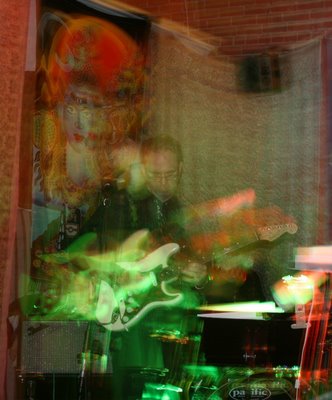
It was hard to pick a favorite moment, but during one of my songs ( I can't remember which), Vinnie, aided by an extra-long cord, pranced out into the dancing crowd while playing a solo on his Strat, and Bill came out to meet him, and they both did power slides, running a few steps, then falling to their knees while playing. This hurts more than you might think.
See below. Oh, my goodness. Bill's laughing too hard here as Vinnie dares him to slide. He took the challenge.
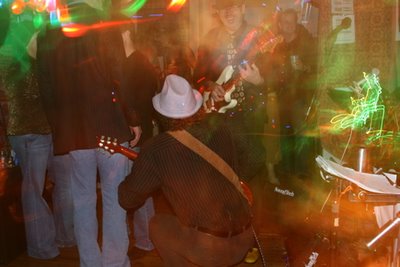
Andy Hall played his butt off last night, with a tiny fedora to boot. I kept peeking back to see his Buddha-like smile behind flying sticks. I don't know how drummers do it. I can't play more than one percussion instrument at a time. Andy's doing something different with each hand and both feet. He flips me out, and he's sooo solid.
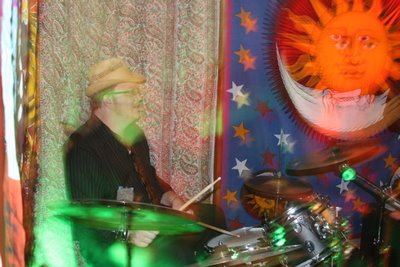
Bill, Andy and Clay got a crazy arena-rock thing going during "Gold Dust Woman," a Stevie Nicks song that I love to sing. I was moved by the sheer magesty of their rawk to power-slide out on the dance floor, and bashed the crap out of the tops of my feet on the wood floor. I did slide for at least ten feet, however, and witnesses told me that I looked like I knew what I was doing. Perhaps they were being kind; friends are like that. I know one thing--I'm not gonna do that again, at least not without socks on. All this on one glass of wine. I was chugging hot rooibos tea all night, trying to keep my battered vocal cords going. Today, I couldn't hit a high note if you held a gun to my head--it's gone. I sound like Demi Moore today, and not in a nice, sexy way. More in a cronelike way. A power-sliding cronelike way. I should stick to a more sedate performance style at my age.
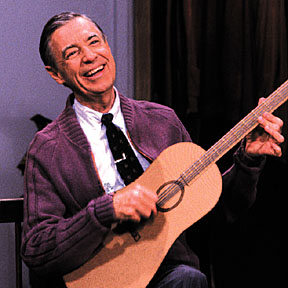 I love Fred Rogers and am absolutely not making fun of him here. He is my hero. I just couldn't resist.
I love Fred Rogers and am absolutely not making fun of him here. He is my hero. I just couldn't resist.Vinnie, AKA Sparkle, was on fire last night. His version of "Boom Boom Boom" got everybody shaking. Beneath the giddy exterior is a rock-solid musician of great range and versatility.
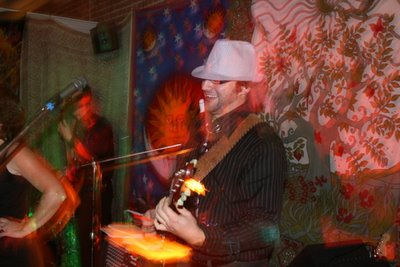
The sartorial excellence was provided by Bandleader Bill, who went on a shopping spree at Kohl's, finding matching black pinstriped wide-collared shirts, with colorful mod daisy ties--a different color for each guy. The boys looked so fine. I love the extra effort Bill puts into making us a band, and making us look like one.
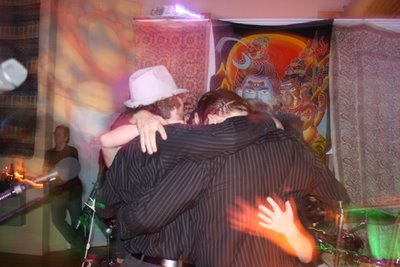
Group hug at 2 AM. It felt so good to show so many people such a good time. But I'm sure nobody had more fun than we did. We were working too hard to talk to anyone, but we communicated just the same. Tonight, cracked voice, bashed feet and all, I feel like the luckiest woman in the world, to have this music and these people in my life.
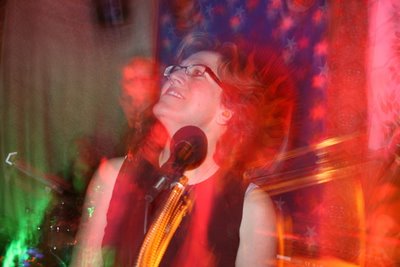 All band photos by Shila Wilson, our personal Annie Liebowitz.
All band photos by Shila Wilson, our personal Annie Liebowitz.Labels: live music, New Year's Eve, power slide, Shila Wilson, Swinging Orangutangs

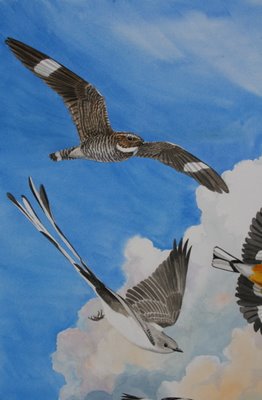 For one thing, it's gray, and I love working in grays. For another, it's impossibly ectomorphic and graceful and zippy and just perfect in every proportion. Even its wings are tapered and beautiful. I've painted everything. It's time for the carmine pink. Ready?
For one thing, it's gray, and I love working in grays. For another, it's impossibly ectomorphic and graceful and zippy and just perfect in every proportion. Even its wings are tapered and beautiful. I've painted everything. It's time for the carmine pink. Ready?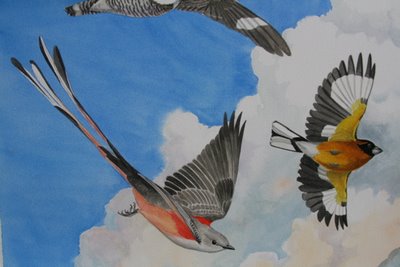
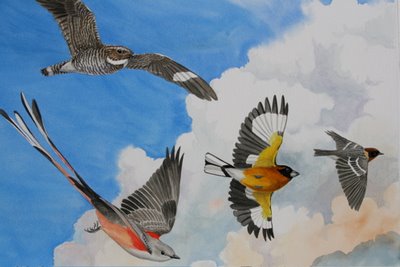
 And I guess it's done. Time to box it up (now there's a project) and send it off to Washington...
And I guess it's done. Time to box it up (now there's a project) and send it off to Washington...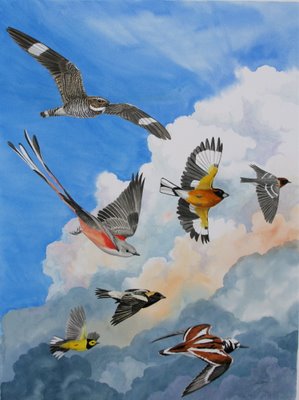
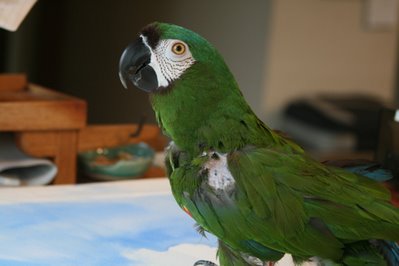 **anyone remember those awful Shake-n-Bake TV commercials, where the little girl yelps, "An' Ah Hayulped!"
**anyone remember those awful Shake-n-Bake TV commercials, where the little girl yelps, "An' Ah Hayulped!"
